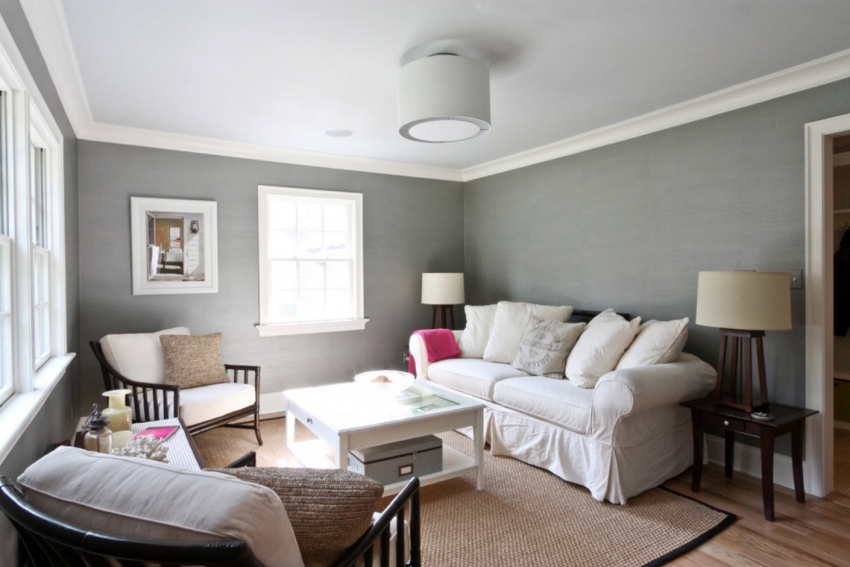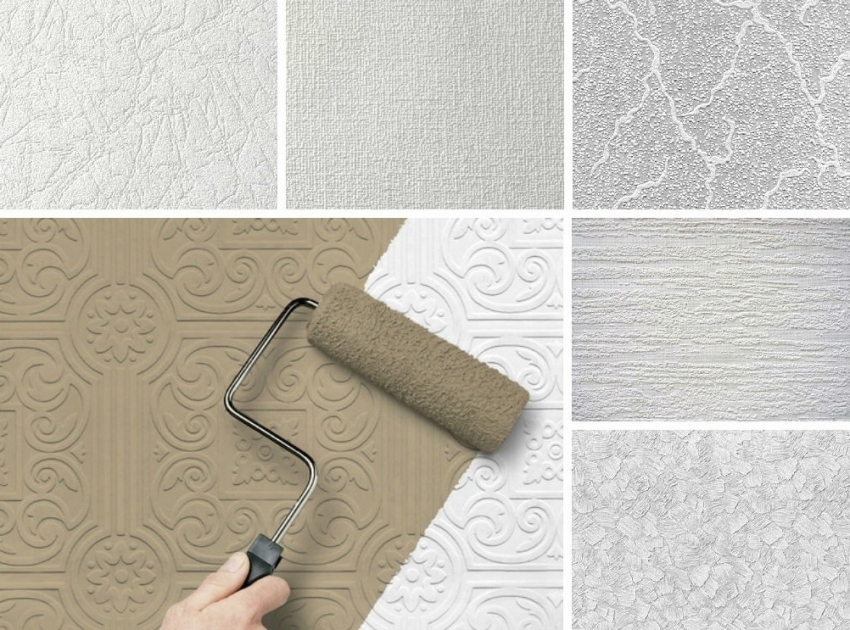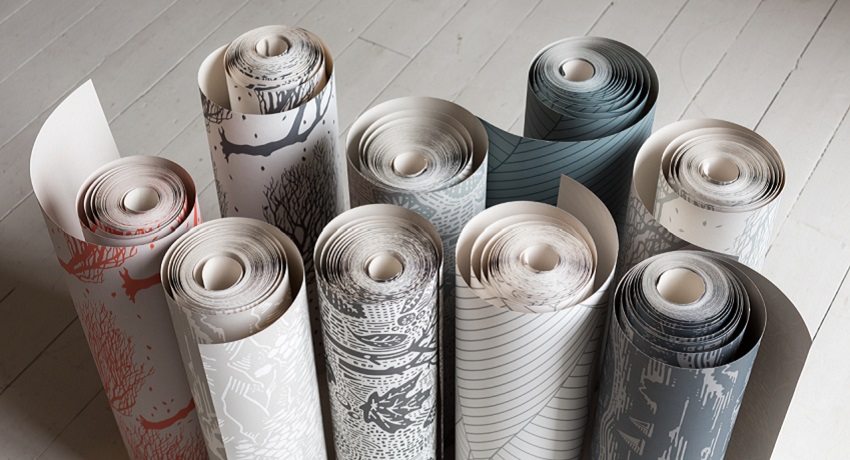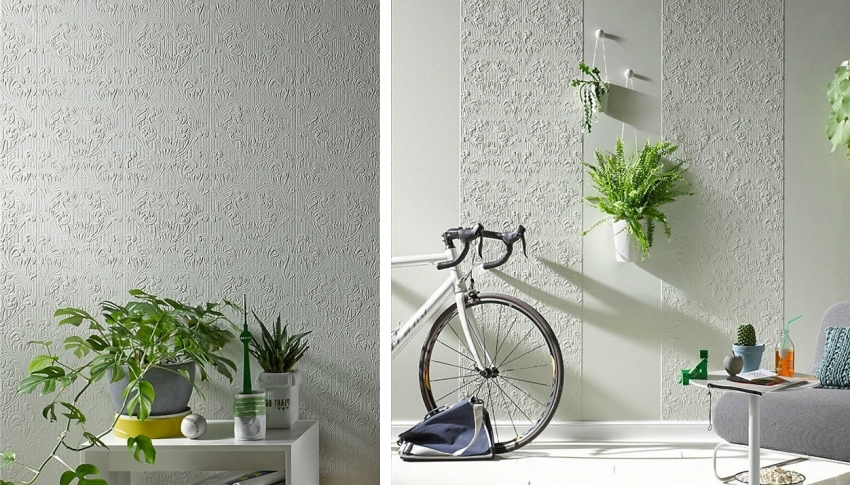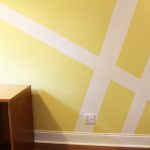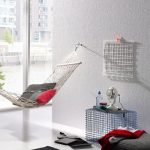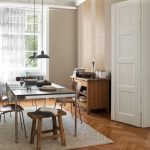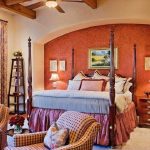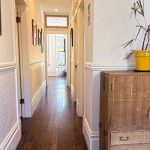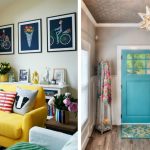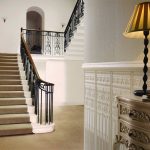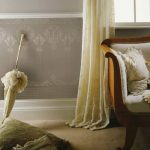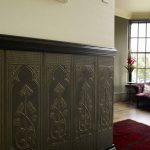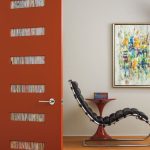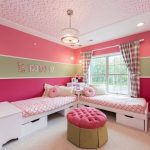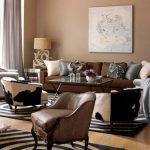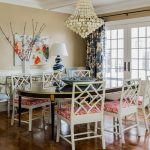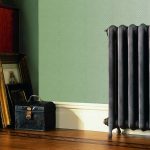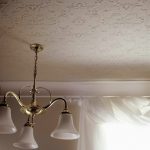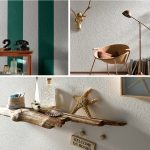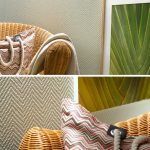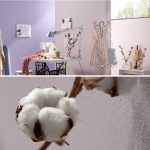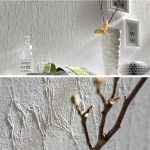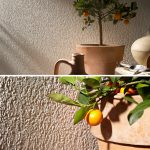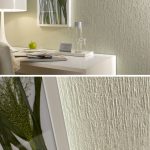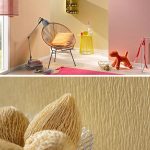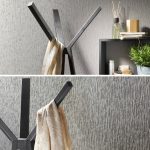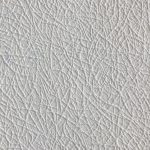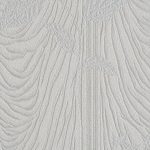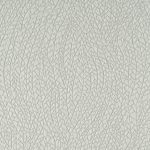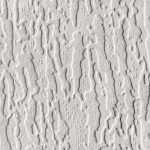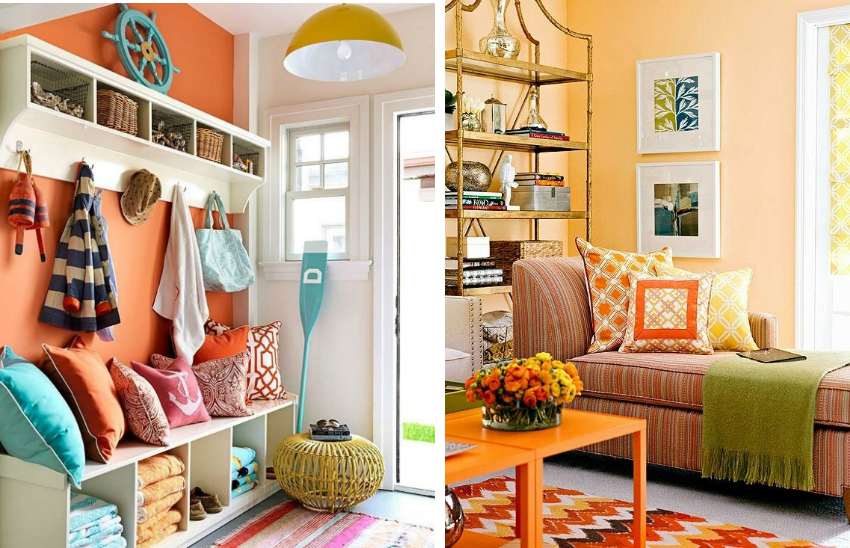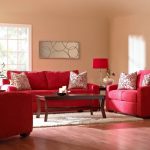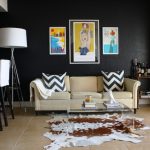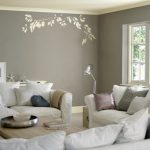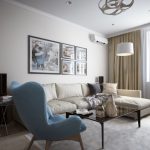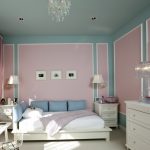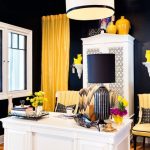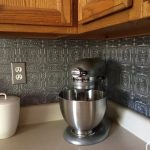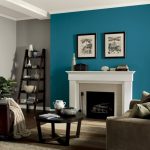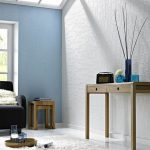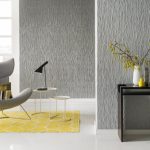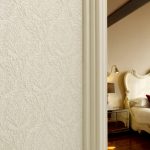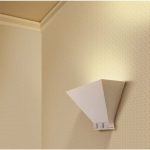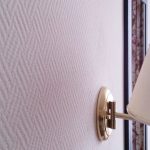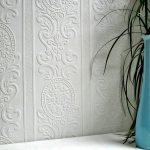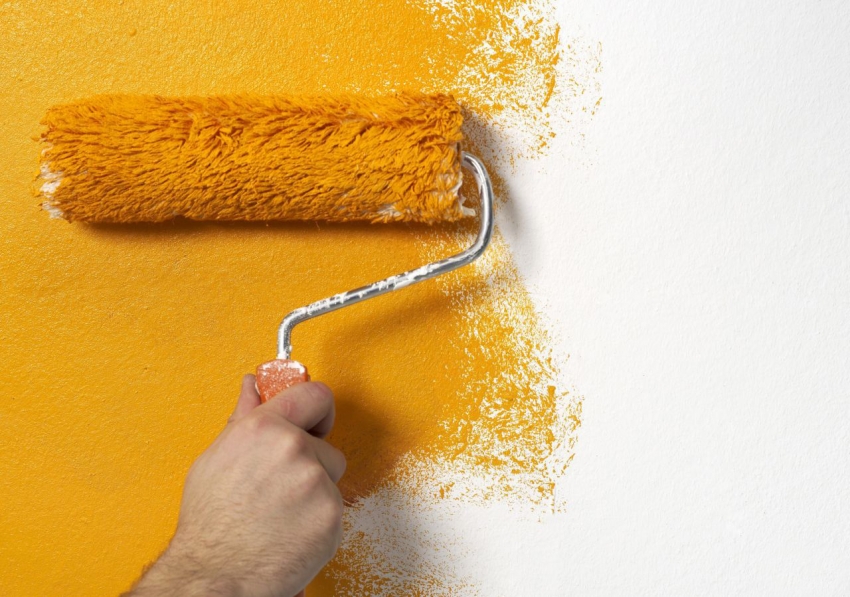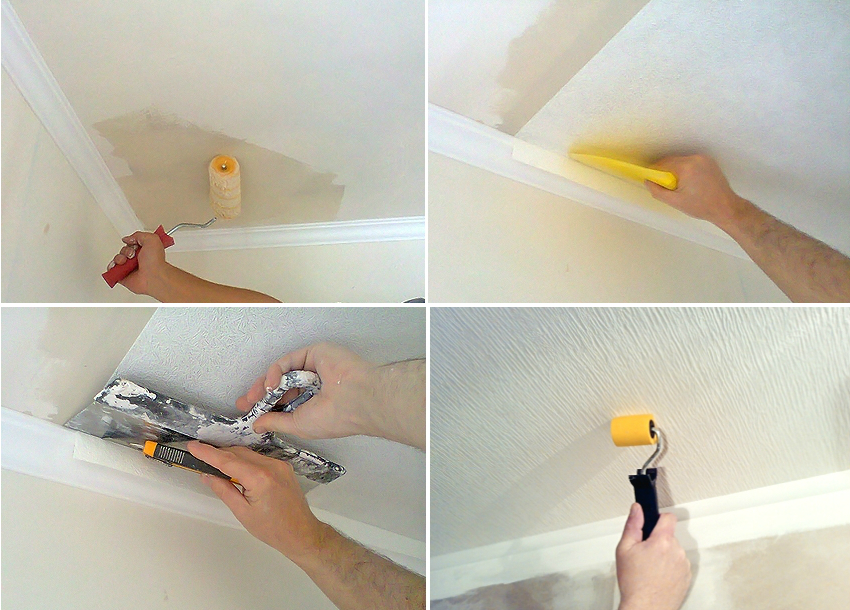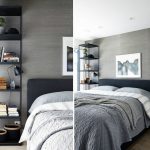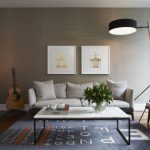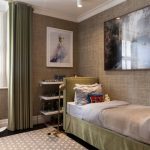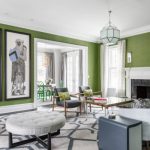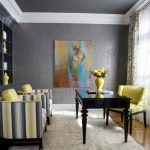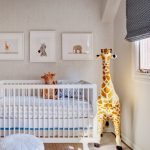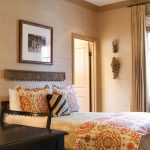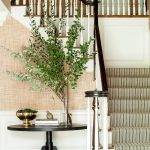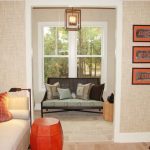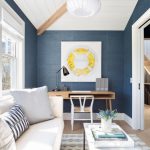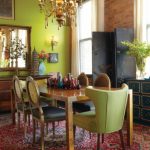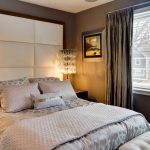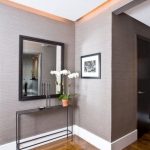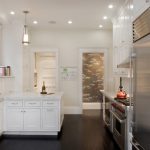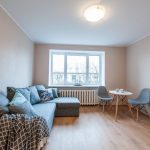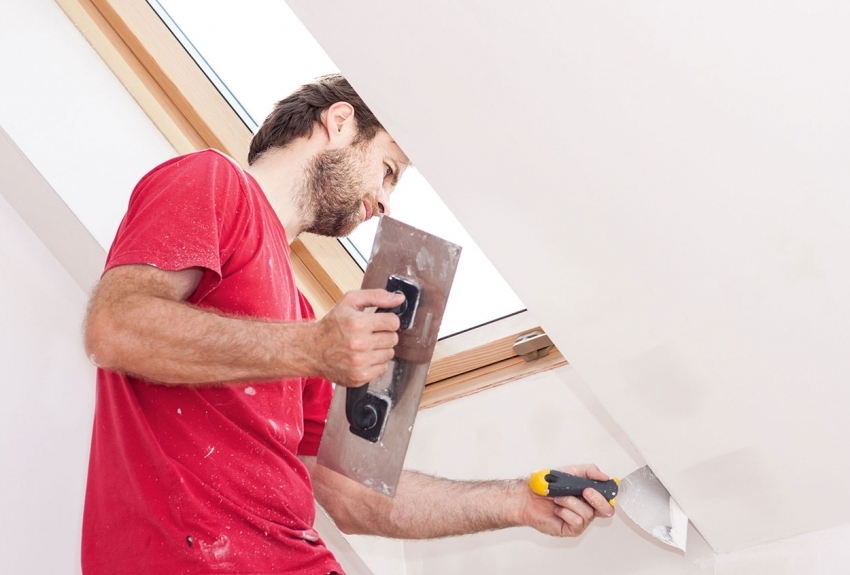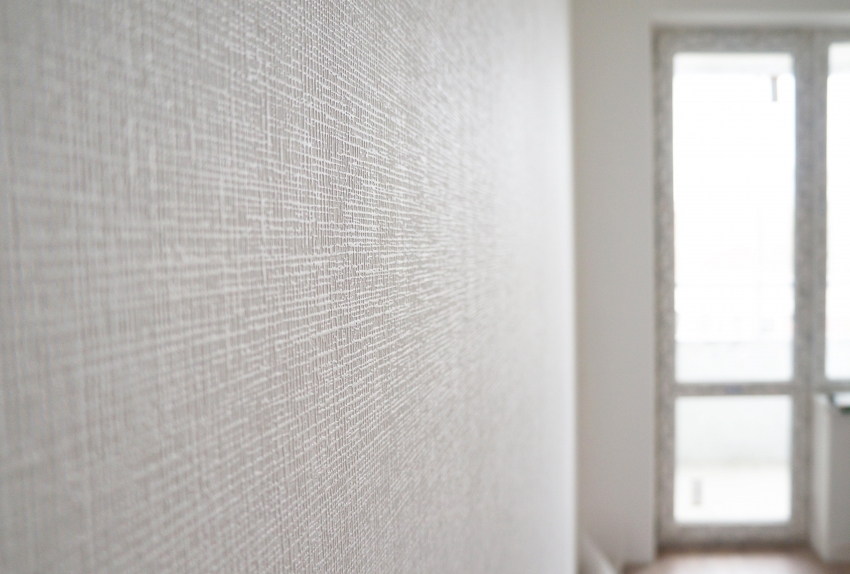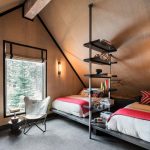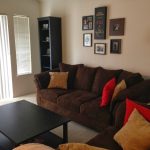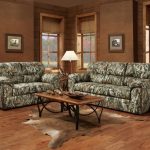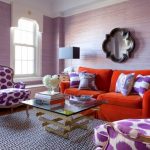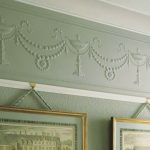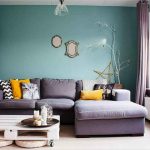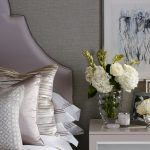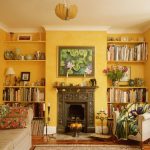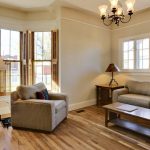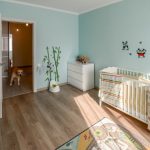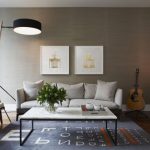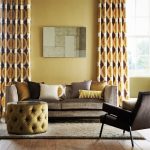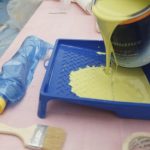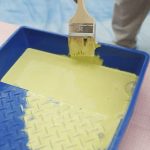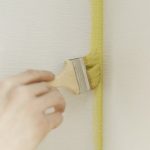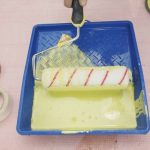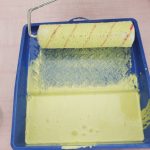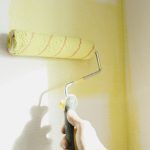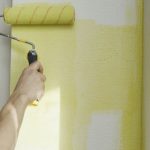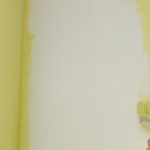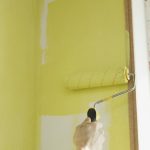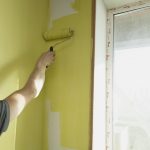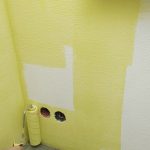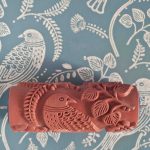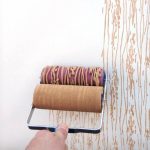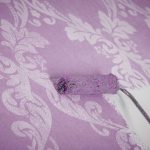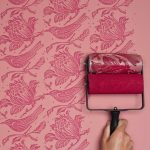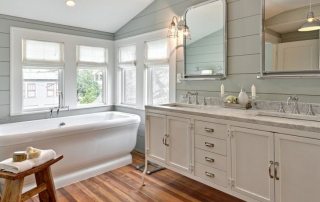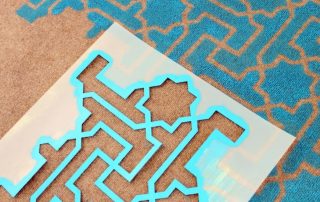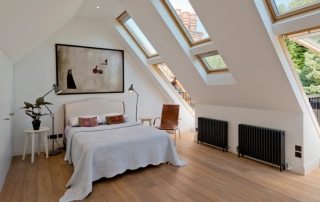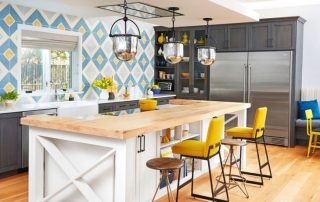This article examines such a type of finishing material as wallpaper for painting in the interior: photo examples that clearly display the features of popular types of products, their technical and operational characteristics, prices. The text contains recommendations for choosing the optimal wallpaper for painting, advice on surface preparation, as well as a description of the technology for gluing and painting walls and ceilings with this finish.
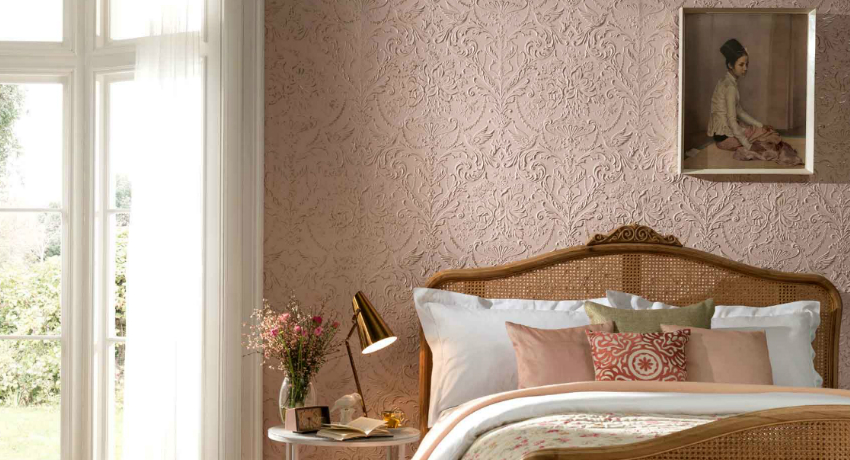
Textured paintable wallpaper is used both for interior design in a classic style and for more modern options - high-tech, modern or Provence
Content
- 1 The main types of wallpaper for painting: which products are better to buy
- 1.1 Wallpaper for painting in the interior: photo of products on a paper basis
- 1.2 Characteristics of vinyl wallpaper for painting: photo-catalog of products on a non-woven basis
- 1.3 Features of fiberglass wallpaper for painting: photo examples of products in the interior
- 1.4 Wallpaper prices for painting, photos and technical parameters
- 1.5 Characteristics of anti-vandal paintable wallpaper
- 1.6 Buying wallpaper for painting: what are the best materials for repair
- 2 How to glue wallpaper for painting and apply a tinting composition
- 2.1 Features of gluing vinyl wallpaper for painting
- 2.2 Finishing vinyl wallpaper for painting on the wall: how to paint canvases
- 2.3 Gluing fiberglass wallpaper for painting: how to prepare walls for finishing
- 2.4 Finishing of fiberglass wallpaper for painting
- 2.5 How to glue paper-based wallpaper for painting
- 2.6 Finishing paper wallpaper for painting: how to paint two-layer canvases
The main types of wallpaper for painting: which products are better to buy
Many apartment and country house owners consider paintable wallpaper as the optimal finish for walls and ceilings. But not every type of coating is suitable for these purposes. Modern catalogs of wallpaper for painting are ready to offer customers hundreds of options for this material, which has a smooth or embossed, pronounced texture and moisture resistance.
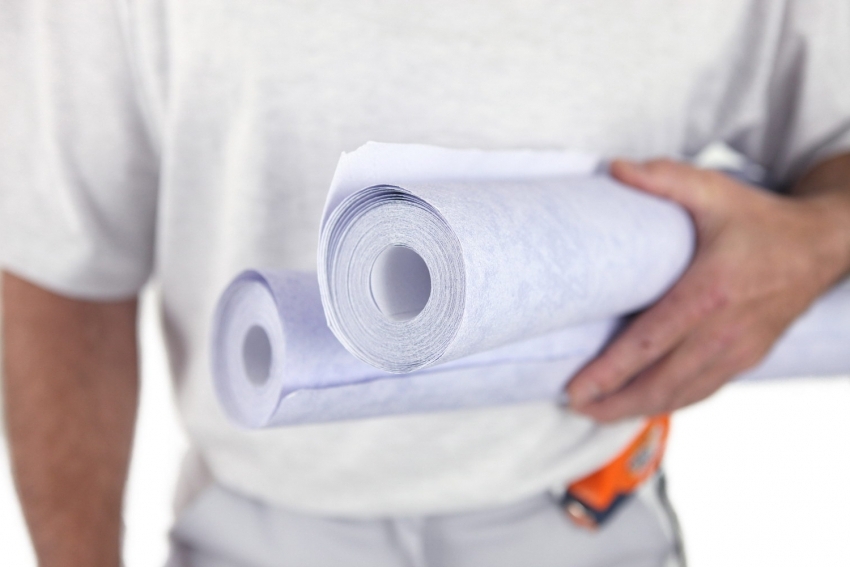
Wallpaper for painting is a convenient finishing option if the interior of the room changes quite often
There are several types of paintable wallpaper:
- Non-woven.
- Paper.
- Fiberglass.
These types of wallpaper differ not only in material, but also in manufacturing techniques, as well as gluing to wall or ceiling surfaces.
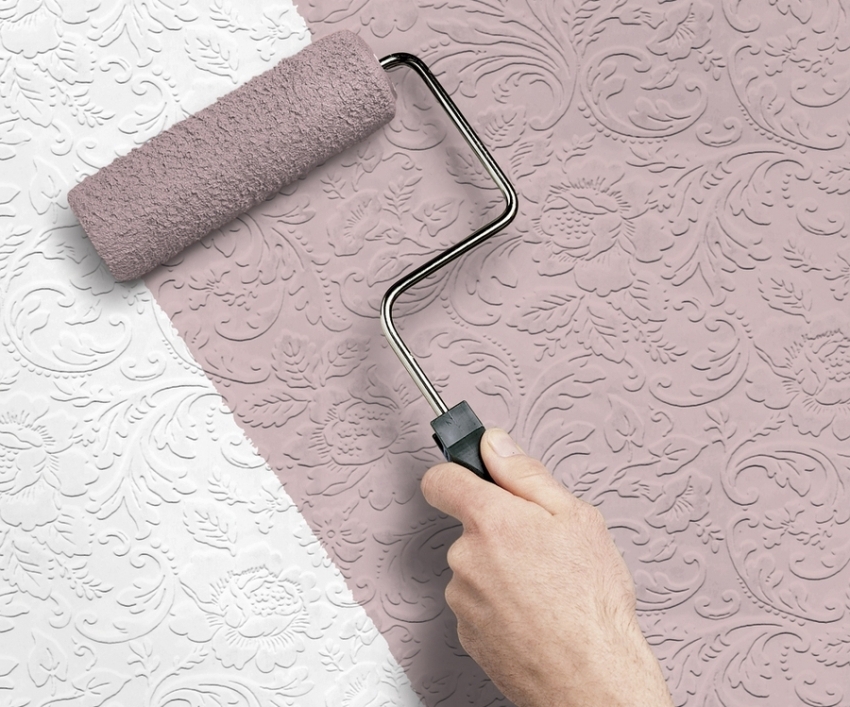
For coloring wallpaper, it is worth choosing special paints, which will extend the operational life of the material
Wallpaper for painting in the interior: photo of products on a paper basis
Paper-backed finishes are suitable for creating bold designs in living rooms. The coating can be repeatedly colored (3 times, in some cases up to 5 times), while maintaining an attractive appearance.This makes it possible to repeatedly change the color of the room without the need to re-glue the wallpaper.
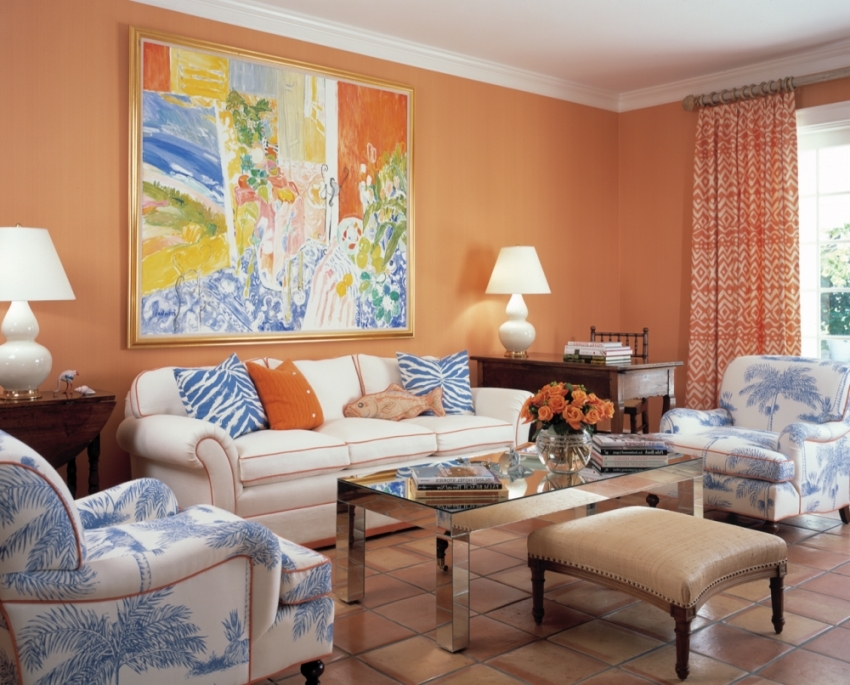
Textured wallpaper for painting has a dense and interesting structure, which allows not only to decorate the walls with style, but also to reliably protect the walls from moisture
Paper-based wallpaper can add color to the room, so these products are very popular. Such wallpapers have a dense structure. Manufacturers process the coating with water-repellent impregnations, which makes it possible to use them in rooms with high humidity levels.
There are hundreds of samples on sale with a variety of textures. There are also paper-based coarse fiber materials. To make their relief structure, sawdust is used, located on the canvas in layers in a chaotic manner. This type of finish is suitable for use as paintable wallpaper on ceilings and walls. In addition, it is considered one of the safest and most environmentally friendly.
Useful advice! With the help of textured wallpaper, you can successfully mask all the errors and irregularities of the walls and ceilings. The embossed finish will hide all defects.
Characteristics of vinyl wallpaper for painting: photo-catalog of products on a non-woven basis
On the basis of non-woven or vinyl wallpaper, you can create an original design of a room, both residential and office. This material is notable for its practicality and a rather high level of strength, which is provided by a two-layer structure. As a basis for manufacturing, a hygroscopic non-woven material is used, which is covered with a layer of foamed polyvinyl.
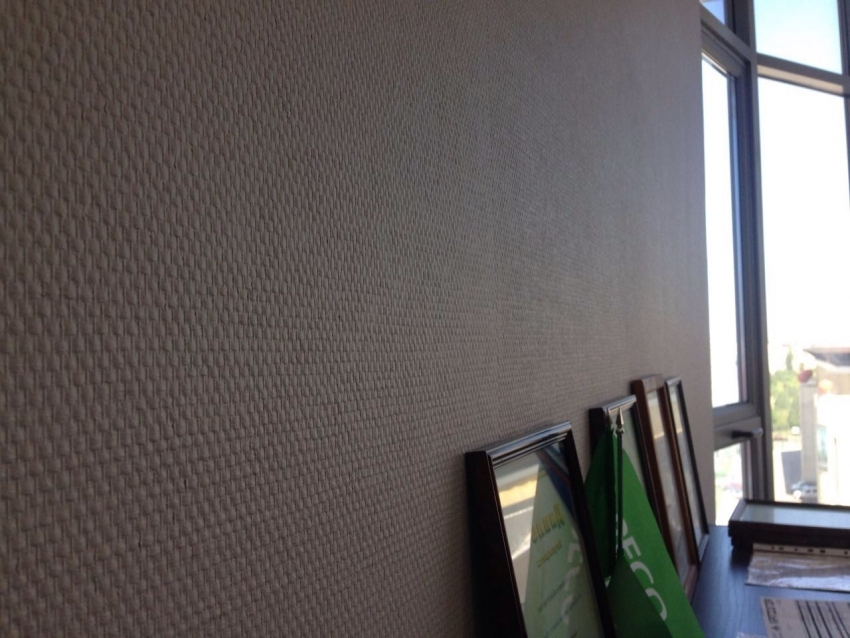
Textured paintable wallpaper on a non-woven base has a fairly high level of strength, which makes them a popular option for decorating offices and hallways
Advantages of paintable vinyl wallpaper on a non-woven backing:
- safety and environmental friendliness;
- high level of strength;
- Fire safety;
- original appearance;
- extensive offer of textured solutions.
Vinyl wallpaper can last for several years, retaining its attractiveness throughout the entire period of operation.
Features of fiberglass wallpaper for painting: photo examples of products in the interior
Fiberglass wallpapers are used exclusively for interior wall decoration. They are distinguished from other varieties by the presence of such an advantageous characteristic as fire resistance. The glass cloth finish is low maintenance and retains its attractive appearance as its surface is antistatic. These wallpapers do not attract dust particles and do not retain dirt.
The average lifespan of fiberglass wall cladding material is about 25 years. High-quality canvases can be repainted up to 15 times. The procedure is allowed to be performed almost every year, if necessary.
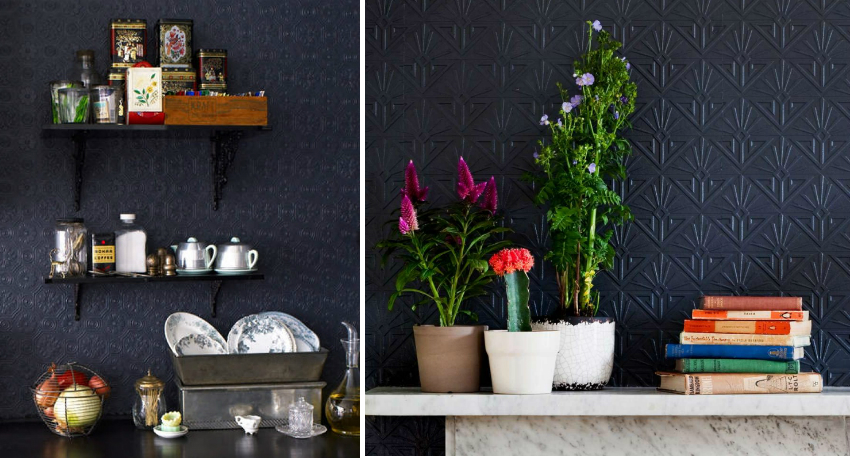
Fiberglass wallpaper is easy to clean because it does not retain dust and dirt on the surface due to its antistatic properties
On sale you can find fiberglass wallpaper with various patterns. The most common design options are textures in the form of matting, Christmas trees, rhombuses, but the range of the modern market of textured wallpaper for painting is not limited to this.
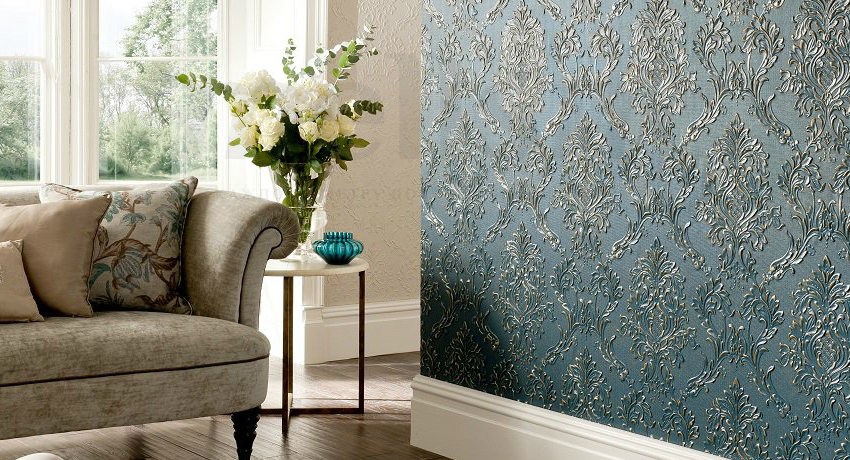
The cost of wallpaper for painting is determined by the type of material from which they are made, the peculiarity of the texture and the country of the manufacturer
Wallpaper prices for painting, photos and technical parameters
Most wallpaper designed for painting has a white or light shade in neutral colors.Such a base is easier to color and does not require multi-layer application of the dye composition to obtain a primary uniform color.
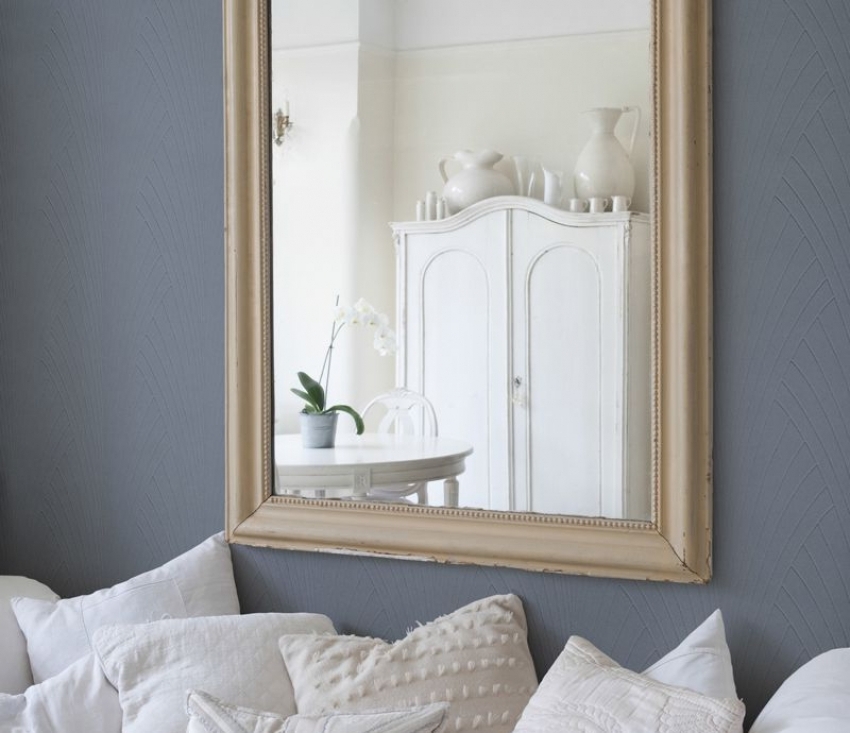
In order for the wallpaper to be painted to lie flat, and the painting was perfect, you should take care of the preliminary preparation of the walls before gluing
These types of wallpaper are made on the basis of different materials using special technologies, therefore, in each of the cases, the finish receives certain properties. The characteristics of this or that type of product determine both the decorative effect on the walls and the tasks that are solved with the help of it. For this reason, the price per roll of wallpaper for painting of a certain type, as well as its technical parameters, are individual. The most important technical indicator is the density of the canvas, which also affects the price of products.
Average prices for the main types of wallpaper:
| Finishing type | Density of the canvas, g / m2 | Price per roll, RUB |
| Paper | 95-130 | 450-900 |
| Non-woven | 100-150 | 700-1250 |
| Glass cloth | 115-260 | 800-2000 |
Interesting fact!After dyeing, the strength characteristics of the wallpaper increase significantly.
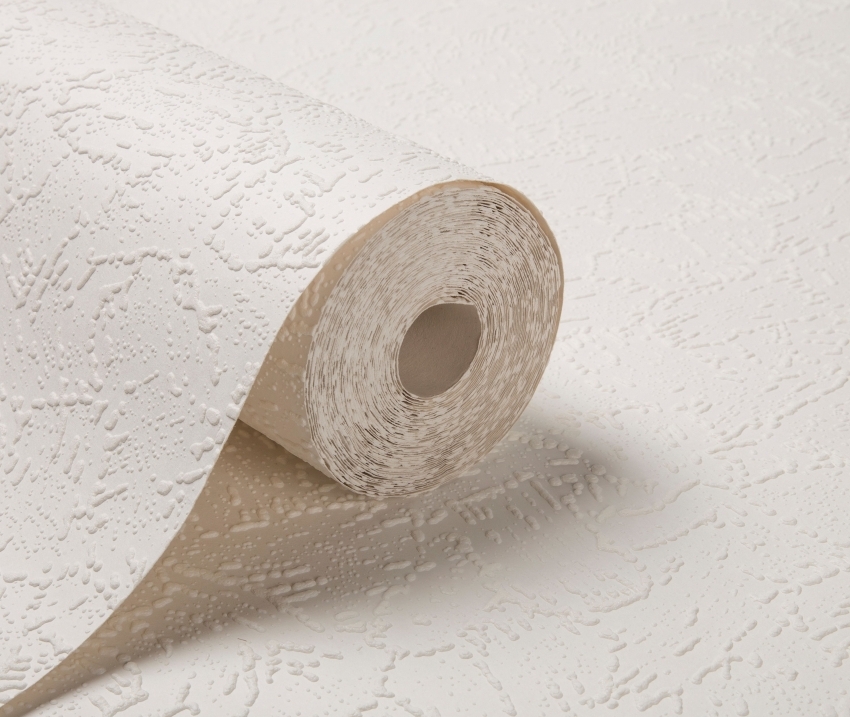
Textured wallpaper for painting is often produced in rolls, 1 m wide, which should be taken into account when calculating the required amount of material
The presence in the catalogs of manufacturers of smooth paintable wallpaper without a pattern is not uncommon, which cannot be said about coatings with a glossy surface. The fact is that semi-matte and matte textures with fine grain help improve the adhesive properties of the dye composition. And when combined with gloss, it is difficult to achieve a durable finish. Therefore, in most cases, these wallpapers have a relief surface.
Related article:
Wallpaper for walls: a catalog of photos of current and stylish options
Types of wallpaper. How to choose wallpaper for apartment rooms: living room, bedroom, nursery. Photo catalog and prices for various types of wallpaper.
Characteristics of anti-vandal paintable wallpaper
Anti-vandal wallpaper differs from standard materials for painting by its increased resistance to moderate mechanical stress, as well as to abrasion.
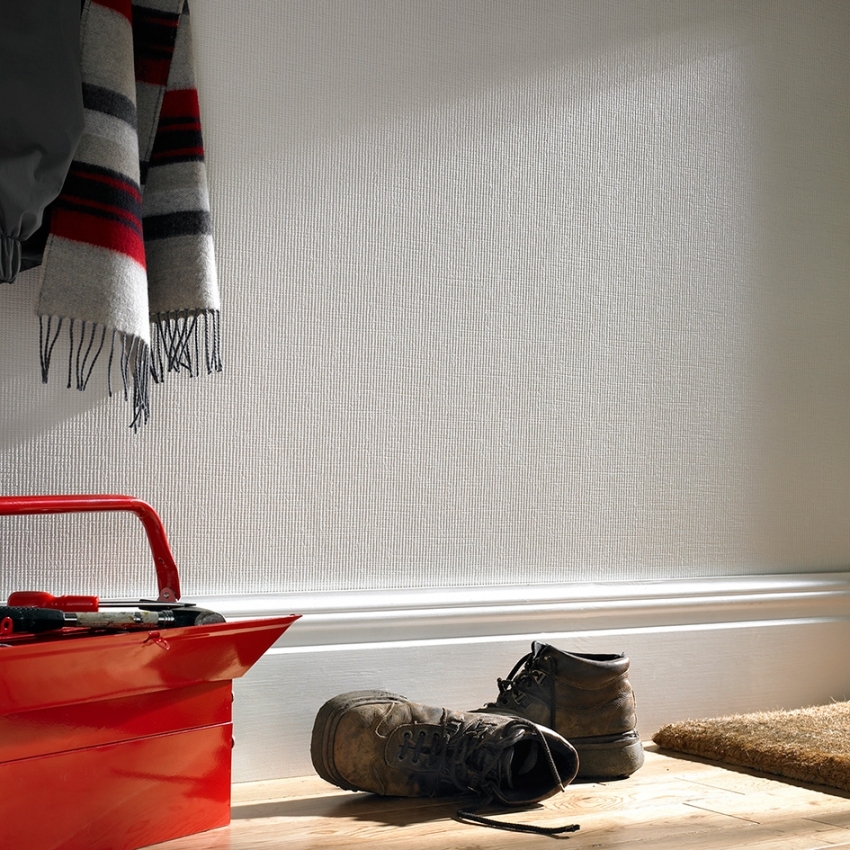
If the anti-vandal wallpaper is dirty, stains can be easily painted over or removed with a damp cloth.
The properties of these products are useful in the following cases:
- Children's room decoration. The coating retains its integrity in case of minor blows, allows you to paint over drawings on the walls left by children with pens, paints and felt-tip pens, and also remove plates with a stiff brush.
- Renovation in the hallway. This type of room is characterized by high traffic and wall loads.
- Kitchen decoration. The surface allows you to remove grease and stains from the walls using alkaline and acid based chemicals.
- Pasting walls in a house where animals live. Vandal-proof wallpapers are not afraid of cat claws and are less affected by dog teeth than conventional materials.
This material category includes vandal-proof glass cloth and vinyl wallpaper. The latter are characterized by high density - up to 500 g / m². German brands are especially popular in the market. The paintable wallpaper manufacturer Marburg produces all types of materials, including anti-vandal. The average cost of such wallpaper varies between 150-1500 rubles / m². Optimal coverage can be achieved by purchasing material in the price range 180-700 rubles / m².
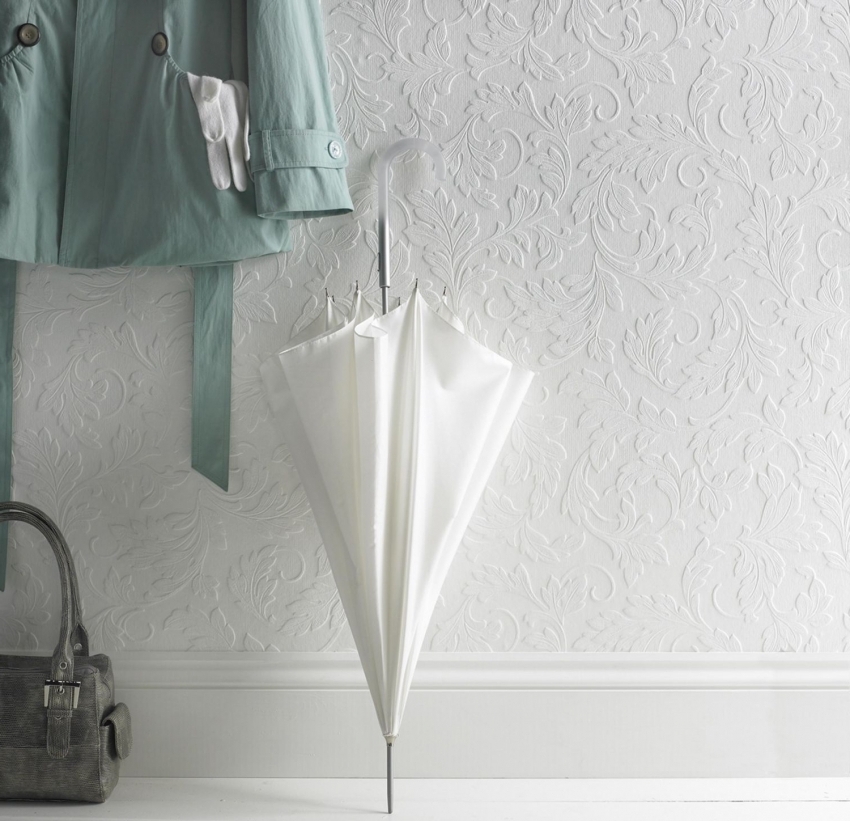
Anti-vandal wallpaper is more reliable and is not afraid of dirt, scratches or odors, therefore it is recommended to use them for decorating children's and hallways
Useful advice!Strengthen the strength of the anti-vandal coating using the reinforcement effect. For this, artificial and natural fibers are used, and the outer layer of such a finish is made of a material that is resistant to wear. These wallpapers include Vescom Color Choice 138.064.These vinyls are set on a cotton backing and covered with a thin Teflon backing for superior protection.
Buying wallpaper for painting: what are the best materials for repair
When choosing wallpaper with a certain texture, one should take into account the style of the future interior in the room, as well as the purpose of the room itself. If the design is supposed to be austere or classic, it is better to stop at smooth non-woven wallpaper for painting. It is desirable that the material has no pattern or its presence is minimal.
Large textured decor on the wallpaper is more pronounced and noticeable. When arranging small rooms or corridors, it is better to refuse to use such finishes. In this case, the choice of smooth materials or decorated with small patterns will be preferable. If you intend to use wallpaper for painting under plaster with a pronounced texture, it is not recommended to use glossy compositions. Semi-matt and matt paints are suitable for this finish.
In the setting living room coverings decorated with a geometric or chaotic pattern will look beneficial. It is allowed to use wallpaper with a 3D effect that realistically simulates volumetric decorative elements. Chaotic patterns are appropriate in small rooms; materials with a large pattern are suitable for spacious living rooms.
The bedroom should be comfortable. Non-woven or paper wallpaper is sufficient for wall decoration in recreation rooms. They are safe, breathable well, so they are suitable even for a nursery. The entrance hall, like the kitchen, needs a finish that can withstand loads perfectly, has a washable and moisture-repellent surface. For these rooms, it is advisable to select materials that have all these properties.
How to glue wallpaper for painting and apply a tinting composition
Each type of wallpaper has its own nuances of gluing and coloring. Regardless of the material chosen, at the first stage of work, you should take care of the availability of the necessary tools and devices, as well as choose the optimal dye, taking into account the developed design.
It is recommended to apply the coloring composition in two layers to ensure a high-quality result. When working with cheap coatings, this procedure may need to be performed three times. As a tool for applying dye, a roller with a fur coat made of sheepskin or velor with a medium pile length is ideal. You will also need a brush for cornering and hard-to-reach areas.
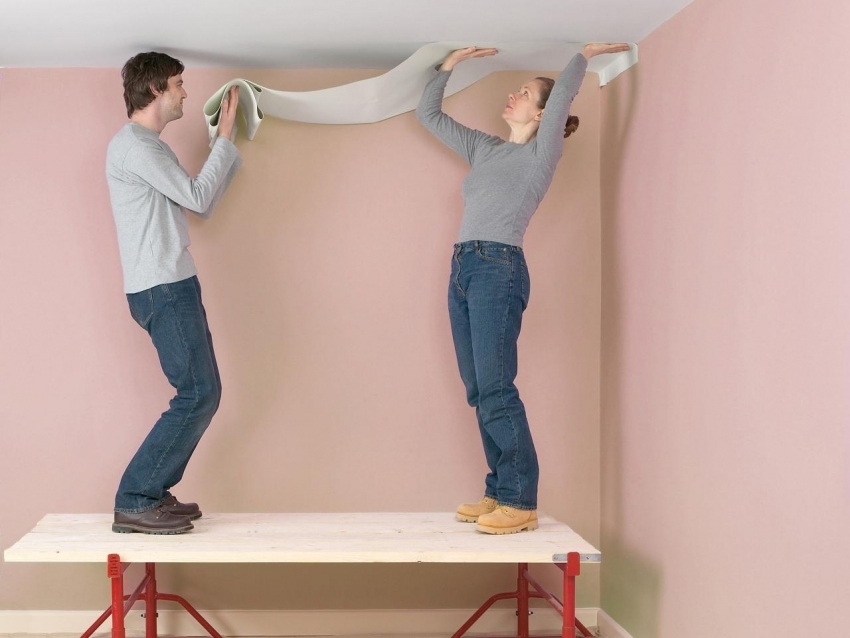
In order for the finish to be even, and the glue does not leave stains, it is better to glue the wallpaper together
Important! It is not recommended to use foam rollers to cover wallpaper for painting. Using this tool for coloring is fraught with the appearance of small air bubbles and deformation of the upper layer of wallpaper.
Types of wallpaper and recommended dyes:
| Finish type | Recommended colorants |
| Non-woven | Water-based (matte and glossy) |
| Paper | Water-based (matte and glossy) |
| Glass cloth | Polymer (acrylic and latex (water-dispersive)) |
Features of gluing vinyl wallpaper for painting
Non-woven or vinyl wallpapers are made from textile and cellulose particles. This type of finish has a small thickness, but this does not affect the strength characteristics. The material is not subject to fading under the influence of high temperatures and deformation changes. It is not necessary to carefully level the walls before gluing such wallpaper.
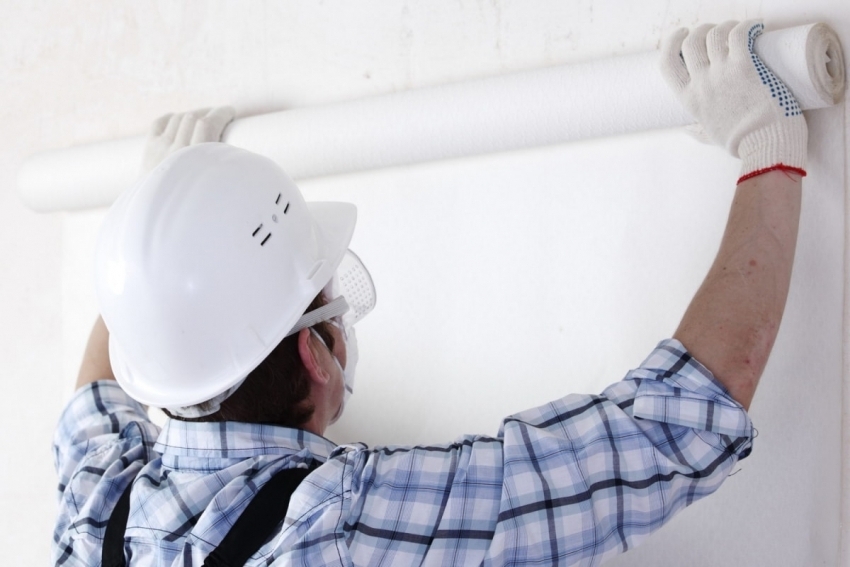
When gluing wallpaper with a repeating textured pattern, the material consumption should be increased so that the joints are even
For work, you will need an adhesive composition.Before purchasing, be sure to read the manufacturer's instructions or consult with the seller in order to choose a material suitable for its properties. You will need a roller to apply the glue.
Before gluing non-woven wallpaper, the surface of the walls should be cleaned and dried. The procedure does not provide for the need to process the canvases with an adhesive. It should only be applied to wall surfaces. Fixing the wallpaper is carried out with freshly applied glue, so you need to prepare everything you need in advance and cut the roll into pieces of the appropriate size with an additional margin of 6-8 cm.
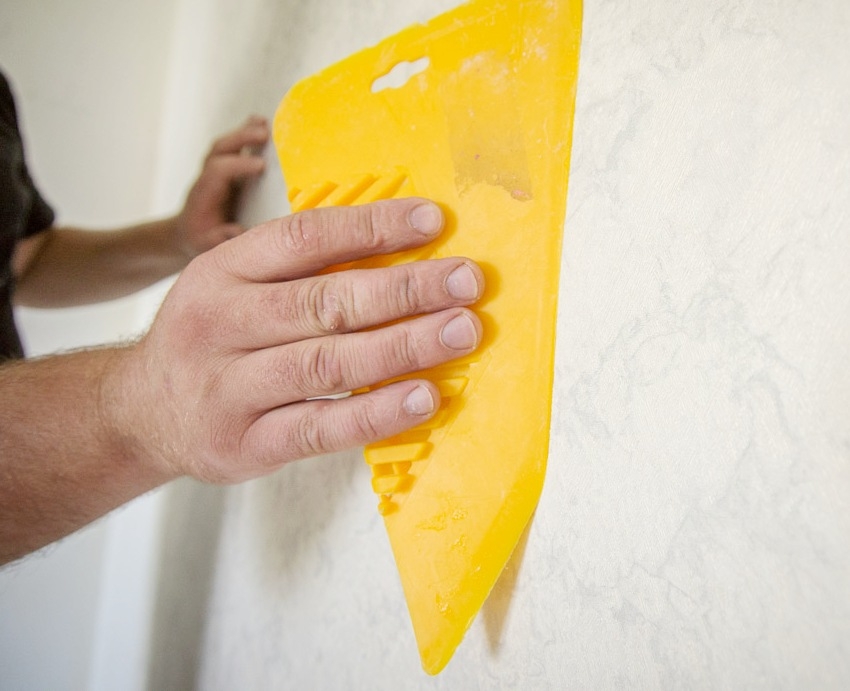
After gluing the wallpaper to the wall, it is necessary to get rid of air bubbles with a special spatula
The procedure looks like this:
- An adhesive composition is applied to the wall.
- A strip of wallpaper is applied to the treated surface.
- The material is pressed gently. The wallpaper should be aligned from the center to the edges.
- Using a plastic spatula, all the air is expelled from under the canvas.
You need to act as quickly and accurately as possible. It is not allowed to get glue on the front of the wallpaper, since after the composition has dried, it is extremely difficult to remove it. If this happens, wipe off the contamination immediately. Before starting staining, you need to wait at least a day.
Finishing vinyl wallpaper for painting on the wall: how to paint canvases
Water-based and acrylic dyes are suitable as a top coat for vinyl wallpaper. Oil-based formulations are not allowed. They contain a solvent that can damage the material. To avoid negative consequences, it is recommended to cut off a small piece of wallpaper and make a test painting. This will allow you to evaluate the consistency of the coloring composition and understand how to work with it.
Note!In order to fully assess the result of staining, as well as the saturation and depth of color, you must definitely wait until the tested segment is completely dry. When dry, the coating becomes lighter.
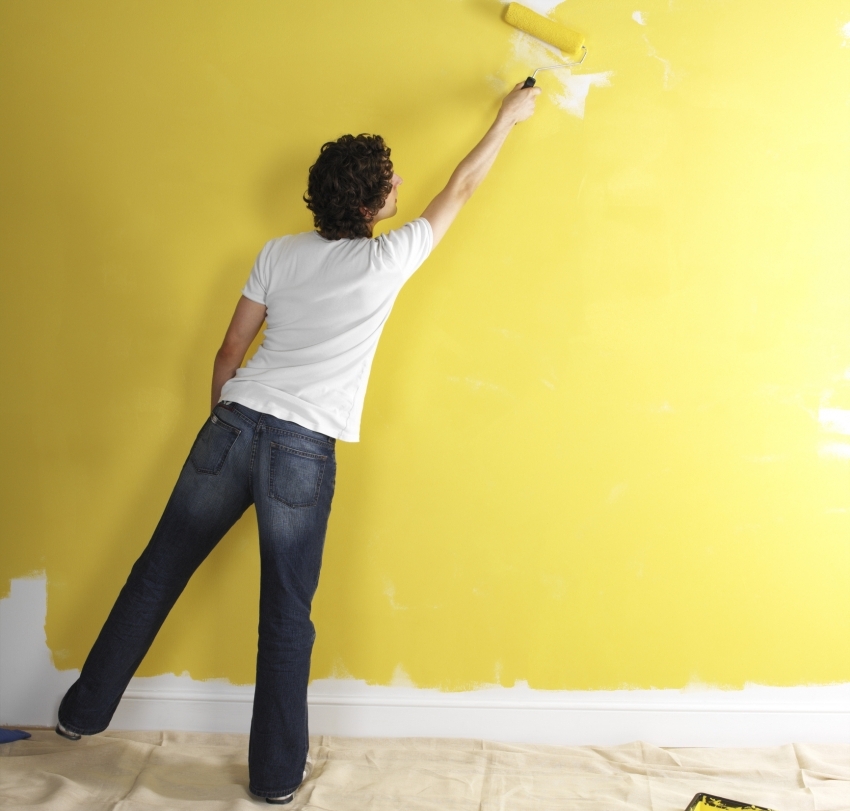
In order for the painting of the wallpaper to be uniform, it is necessary to work out the wall in even parts
For staining, the roller must be dipped into the composition and wait until the tool is saturated with paint. The material is applied to the canvases for painting walls with vertical movements. You need to act smoothly, without strong pressure. If, after drying, poorly painted areas remain on the surface, reapply. It will hide all the flaws. The second layer is applied only after the surface is completely dry.
Gluing fiberglass wallpaper for painting: how to prepare walls for finishing
Fiberglass finishing is made on the basis of glass yarns and is most often presented for sale with photo wallpaper. Environmentally friendly materials are used for the production of the coating: dolomite, lime, soda, quartz sand. Then the threads are integrated into the paper base. The process of gluing glass cloth wallpaper is quite simple, although it is not complete without some nuances. At the same time, it is very important to follow the technology, because it is very difficult to tear the canvas off the wall.
The procedure for gluing fiberglass wallpaper is carried out in several stages. First you need to get rid of the old coating. This type of work will require some effort and specific knowledge. It is not allowed to use cheap, low quality glue. Wallpaper has a rather high price and requires high-quality fixation.
The gluing procedure is carried out as described earlier.The wallpaper sheets remain dry, and the glue is applied only to the surface of the walls, as is the case with non-woven material. When working, it is necessary to exclude the possibility of ultraviolet radiation on the fiberglass. The material is very fragile, so clothes should be as closed as possible. Skin contact with fiberglass particles can cause irritation.
Finishing of fiberglass wallpaper for painting
The staining procedure is started only after the material has completely dried. Glass cloth wallpaper requires at least two days. The processing of the room should be started from the corner zones. You can use a small roller or paint brush to apply the coloring composition.
Experts do not recommend trying to cover the entire perimeter during the staining process. It is better to apply the composition in small pieces. For work, it is preferable to use an acrylic-based dye. Wallpaper for painting with a light glossy finish looks good in the interior. In this case, it is very important not to overdo it with the density of the composition and the number of interlayers, otherwise the entire embossed pattern will clog.
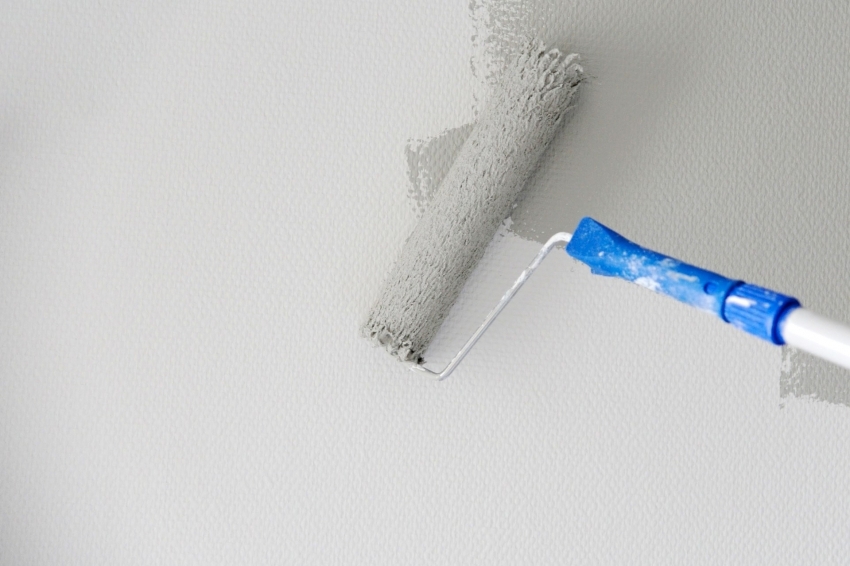
If it is planned to paint fiberglass wallpaper in light shades, you should pay attention that the primer is as transparent as possible
Useful advice! Before applying the paint, the glass cloth must be treated with a primer. Due to this, the particles of the material are kept inside, and the coating becomes safe for human health.
These wallpapers open up a wide range of creative possibilities. In the process of staining, you can use any available means and materials to achieve the desired effect, for example, stencils or patterned rollers... They can be made independently or purchased ready-made at any of the hardware stores.
How to glue paper-based wallpaper for painting
Most often, paper-based wallpapers are decorated with a pattern, they can also be used to decorate the ceiling. This type of material belongs to the budget options for products, which is accompanied by certain disadvantages: folds or bubbles may form in the process of gluing the canvases. But this in no way affects the strength, because many paper wallpapers have a two-layer structure.
Unlike vinyl and fiberglass materials, these wallpapers are also treated with glue, which is applied to the walls. After that, the segment must be gently applied to the surface and, slowly moving with the help of a roller, smooth it evenly. To eliminate the appearance of bubbles and large accumulations of air under the canvas, a spatula can be used instead of a roller.
If you intend to use smooth wallpaper for painting, the surface of the walls should be carefully prepared. Otherwise, all defects will be clearly visible.
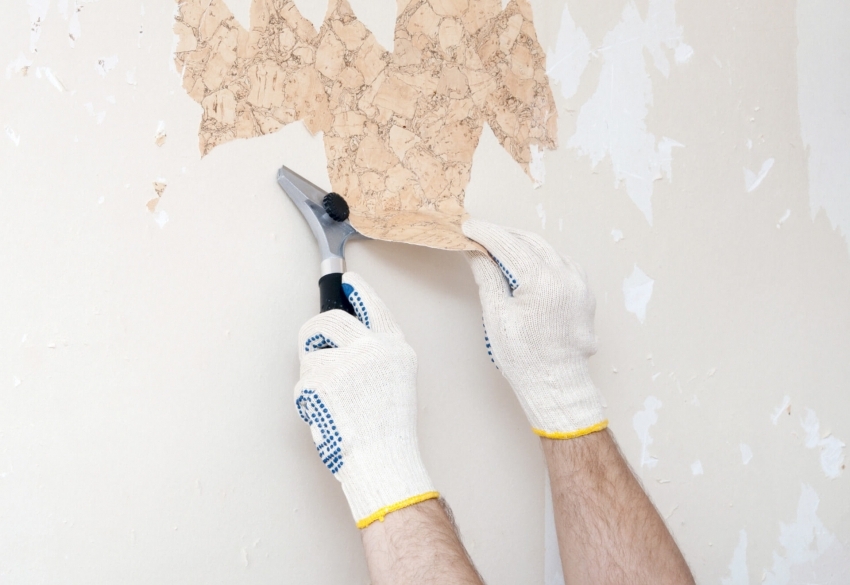
Before gluing thin paper wallpaper, it is worth removing all the old coating and carefully sanding the surface of the walls or ceiling
Wall preparation involves the following procedures:
- removal of paint and old coatings;
- applying plaster for leveling;
- priming treatment.
Useful advice!If there are large cracks and holes on the surface, they should be repaired with a putty compound.
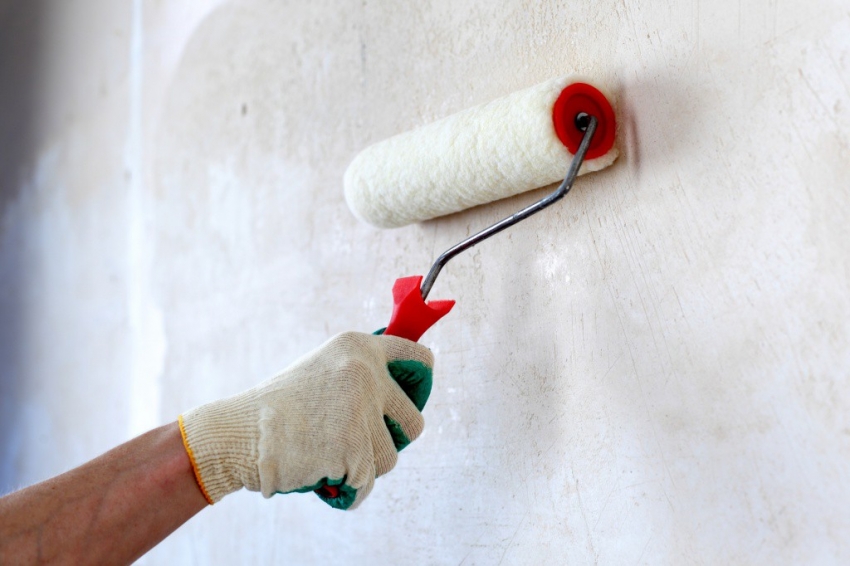
A high-quality soil mixture determines the reliability of fixing the wallpaper for painting to the wall, and also excludes the appearance of mold and mildew under the canvas
Cloths of paper wallpaper are glued end-to-end, without fitting. It takes about a day to fully dry.
Finishing paper wallpaper for painting: how to paint two-layer canvases
For the finishing of paper webs, it is better to use a water-based composition or an acrylic-based paint.It is better to take a roller or spray gun as a tool for applying it, although a spray gun is still an ideal option.
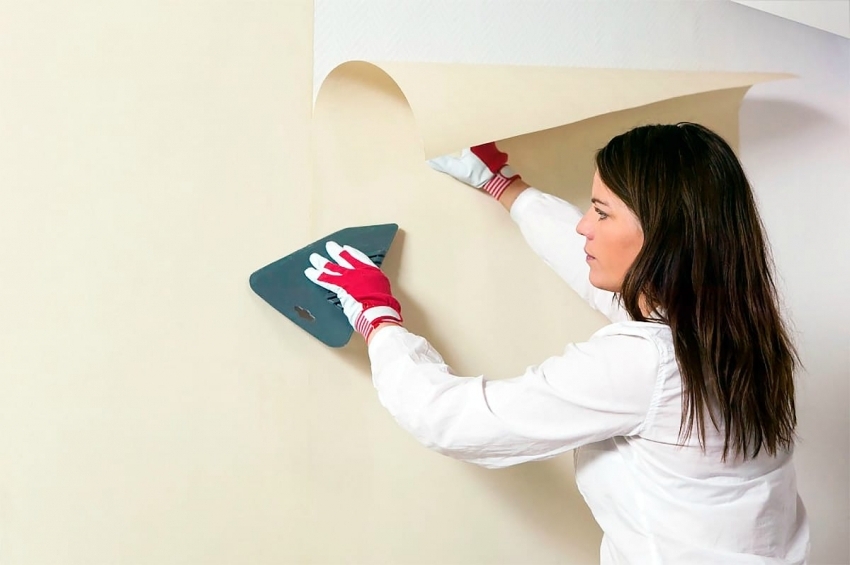
Usually, paintable wallpaper is white, neutral in color, but sometimes materials in other colors can be found.
When the canvases are fully dry after gluing, the dye must be applied in two layers. Work breaks should be taken between them to allow the coating to dry out. Experienced craftsmen perform three-layer staining. At the same time, painters fix the top coat using a special varnish composition that ensures water resistance.
Three-layer painting should be resorted to only if you have the appropriate skills and knowledge, since this method has drawbacks - if the work is performed poorly, all errors will be clearly visible on the surface.
There are many ways to paint the wallpaper for painting: from using special techniques for applying the composition, for example, combined, monochrome or staining with a gradient effect, ending with a choice of colors and patterns that create a certain mood.
There are general rules that apply to all types of wallpaper. For hallways and large rooms it is better to use matte dyes, while for small rooms a semi-matt finish is suitable. With the help of light colors, you can visually expand the space, and the use of staining with a vertical stripe allows you to "raise" the walls. In this case, fantasy is practically unlimited, especially when it comes to smooth wallpaper, which can even be decorated with painting.
